Heated airers vs dehumidifiers — there’s only one option I choose when I want to dry my clothes quickly (and cheaply!)
On paper, they're both solid options. In reality, there's a surprising winner for drying clothes fast
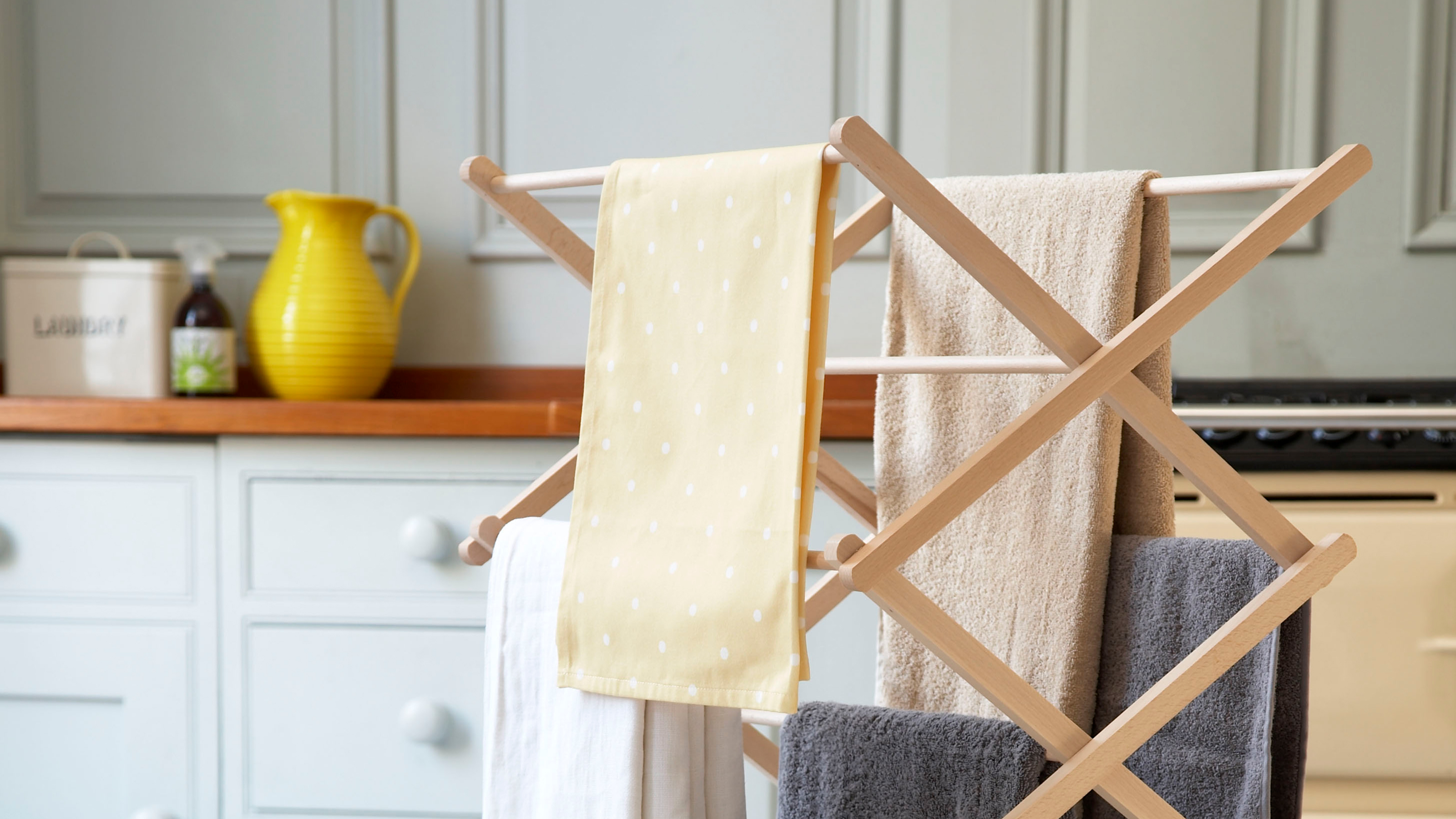

Rebecca Knight
As a homes journalist, I’ve witnessed first-hand the effect that soaring energy bills and chilly winters have had on the heated airer vs dehumidifier debate and why so many people are looking for thrifty alternatives to tumble dryers.
On paper, however, the best heated airers and the best dehumidifiers are two very different appliances. Heated airers are specifically designed to dry clothes thanks to the heated bars or pods directly drying the garments by evaporating the moisture within, while dehumidifiers are - by default - are designed tackle damp and condensation in a home.
This difference in purpose makes the heated airer vs dehumidifier debate so interesting, as you’d assume that the heated airer would win by a mile. But in reality, they can both help you dry clothes without a tumble dryer by taking a slightly different route to get there. However, there is a surprise winner for drying clothes fast on a budget - and it involves both of these handy appliances.
Heated airer vs dehumidifier: Which one dries clothes fastest?
The consensus among our reviewers at Ideal Home is that a standard heated airer takes a little longer to dry a load of laundry than a dehumidifier, sometimes taking up to 10 hours to dry things completely. However, it’s important to note that how long a heated airer takes to dry clothes depends on countless factors.
This includes the type of clothes you’re trying to try (for example, a thin T-shirt could take just three hours, while thick knitwear could take 10 hours), the size of your heated airer and the size of the room you’re drying your clothes in, and how wet your freshly-cleaned clothes were initially (which is why it’s so important to add an extra spin to your laundry routine).
Of course, how you load up your clothes and how effectively you use the heated airer can also impact drying time - so, you could say that there’s an art to drying clothes quickly with a heated airer.
As I’ve had my Dry:Soon 3-Tier Heated Airer from Lakeland for a few years now, I’ve been able to learn from the many heated clothes airer mistakes I’ve made in the past and have now been able to cut my drying time down to around 6 hours for a mixed load of washing. It’s worth noting that using a heated airer cover will also drastically reduce the drying time.
Get the Ideal Home Newsletter
Sign up to our newsletter for style and decor inspiration, house makeovers, project advice and more.
Likewise, our product tester, Amy Lockwood, swears by the JML DriBUDDI Heated Indoor Airer from Robert Dyas, saying 'This drying pod is now my go-to whenever I need to dry clothes indoors fast. On testing, I was extremely impressed with its drying times, with clothes bone dry in 1-3 hours using the DriBUDDI (dependent on thickness) compared to 8-12 hours on a classic heated airer.’
'The only downsides are that you're limited as to how much washing you can fit inside at once – you can only fit 18 items on hangers inside the pod in any one go without overloading it. Plus, the fan that circulates the warm air is noisy – especially compared to a silent heated drying rack,’ she adds.

On the other hand, our reviewer found that our top-rated dehumidifier for drying laundry, the De'Longhi Tascuigo AriaDry Multi Dehumidifier, was able to dry a full load of laundry, including thick towels and bedding, in ‘record time.’
And while dehumidifiers can dry clothes, most - but not all - perform best when they have a dedicated ‘Laundry’ mode. I saw this myself when I tested the Challenge 12L dehumidifier, which was able to dry a full load of clothes in just five and a half hours using this specific function.
If it’s a cheaper dehumidifier, like one of the best dehumidifiers under £100, it likely won’t have a dedicated laundry mode. Because of this, it’s difficult to determine whether a dehumidifier or heated airer dries clothes fastest as there are so many factors to consider. However, in general, there’s very little between them.
Where the dehumidifier has the heated airer beat in terms of drying ability is that it can dry a much larger load(s) of laundry. The heated airer is restricted by what you can fit on it. If you have a couple of the best clothes airers already, a dehumidifier will be able to tackle them all in one go, which will speed up laundry day.
Heated airer vs dehumidifier: Which is easiest to use?
Dehumidifiers and heated airers are relatively easy to use. For the most part, you simply turn them on and allow them to work their magic of their own accord. Many of them also offer timers and auto-shut-off switches to make your life even easier.
However, both a dehumidifier and a heated airer will require you to move clothes around to get an evenly dried result. When I use dehumidifiers, I have to flip my clothes horse around halfway through, and with a three-tier heated airer, the top and second layers dry significantly faster than the bottom layer, so requires moving around.
However, the heated airer is actually the one that the Ideal Home team have struggled the most to use. This is down to how you arrange the clothes so that it actually makes a difference to drying time.
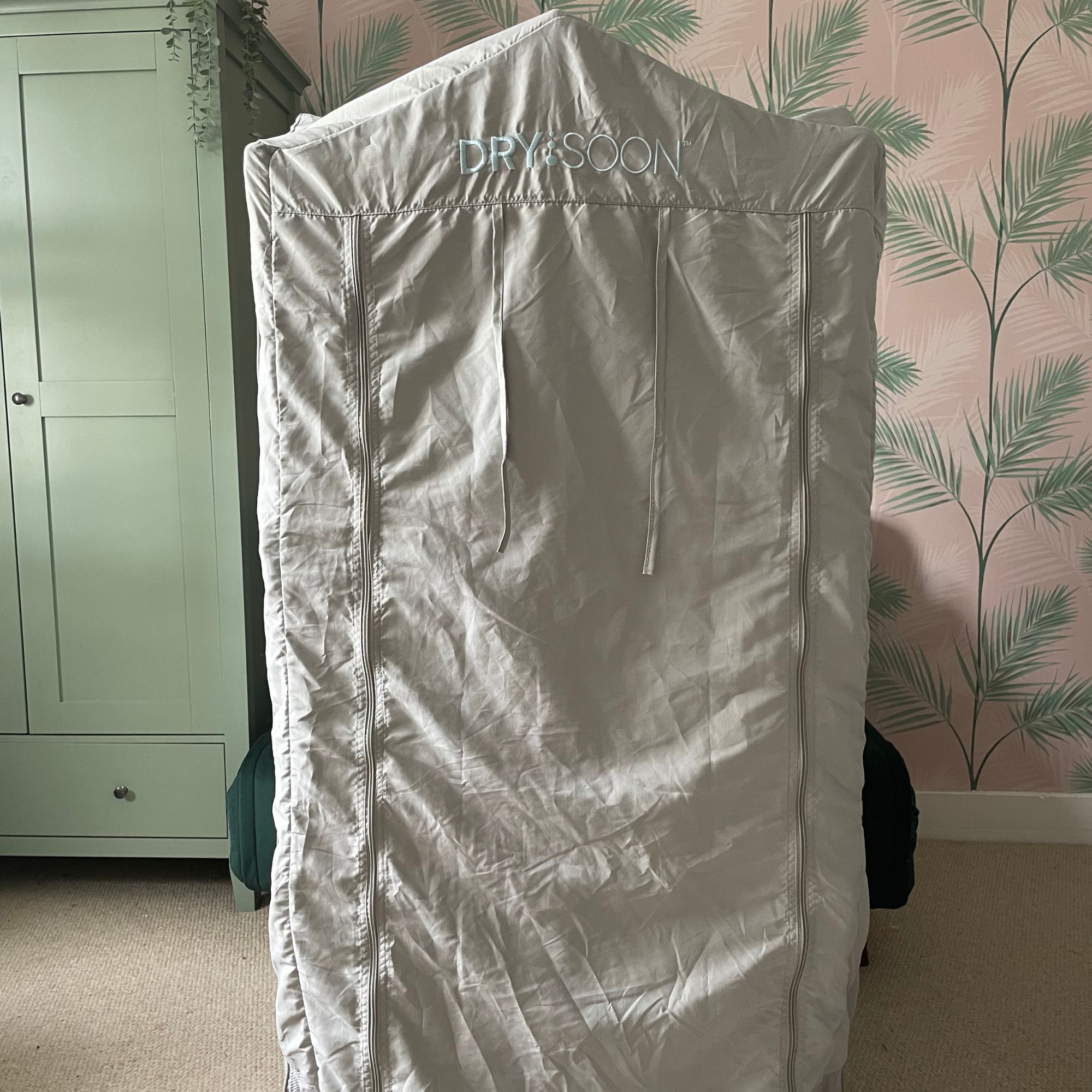
Heated airer in my Flat
Yes, you need to focus more on the placement of your clothes when using a heated airer to dry clothes. As reps from Lakeland told us, ‘A T-shirt can happily hang over one rail, but for something like jeans, I find it best to hang this across 3 or 4 rails.’ This means that you may have to lighten your laundry load to get the most out of your heated airer and keep the drying time consistent.
Alongside this, heated airers are restricted by (often quite short) power cords, while dehumidifiers have a lot of scope for movement. As long as you’ve positioned your dehumidifier in the right place, you can then focus on placing your normal clothes airer somewhere nearby. In fact, a dehumidifier in the middle of a room can not only dry your laundry but also keep the room at the ideal humidity level.
This is echoed by Chris Michael, managing director of Meaco, who says, ‘A dehumidifier will not only dry washing, but it will also protect the whole house from damp and condensation problems. The cost of buying and running a dehumidifier is much less than it might cost to rectify mould and mildew damage done to the fabric of the home.’

Chris has been advising on humidity solutions and dehumidifiers since 1991 and is well known within the dehumidifier industry across the world as a lead on innovation and sustainability. Since the mid-90s Chris has been a guest speaker at numerous conferences to teach museum conservators how to measure relative humidity. With a wealth of experience in the industry, Chris is committed to helping provide low-energy and low-noise solutions appliances that improve the lives of customers.
Heated airer vs dehumidifier: Which is easiest to store?
Generally, a heated airer is considered the easiest to store out of sight when not in use. Most of the best options on the market - including the Minky SureDri 4 Tier Heated Airer with Timer & Cover from Argos - fold down flat and can then be stored in cupboards, behind sofas, or just up against a wall. The Minky even comes with a cover that serves as a storage bag, too.
However, storing a dehumidifier is a little tricker as there’s nothing you can do to make it smaller. There are ways to hide a dehumidifier when not in use, though, and it could be worth opting for a more stylish dehumidifier - like the MeacoDry Arete Two - if you don’t have too many options for storage. As this particular model also doubles up as an air purifier, it’s handy to keep it out at all times anyway.
Because of this, a dehumidifier is definitely better suited to you if you have a dedicated room for drying clothes or if you're prepared to use it for other purposes to justify the real estate it takes up. If not, a heated airer wins the storage round in the heated airer vs dehumidifier debate.
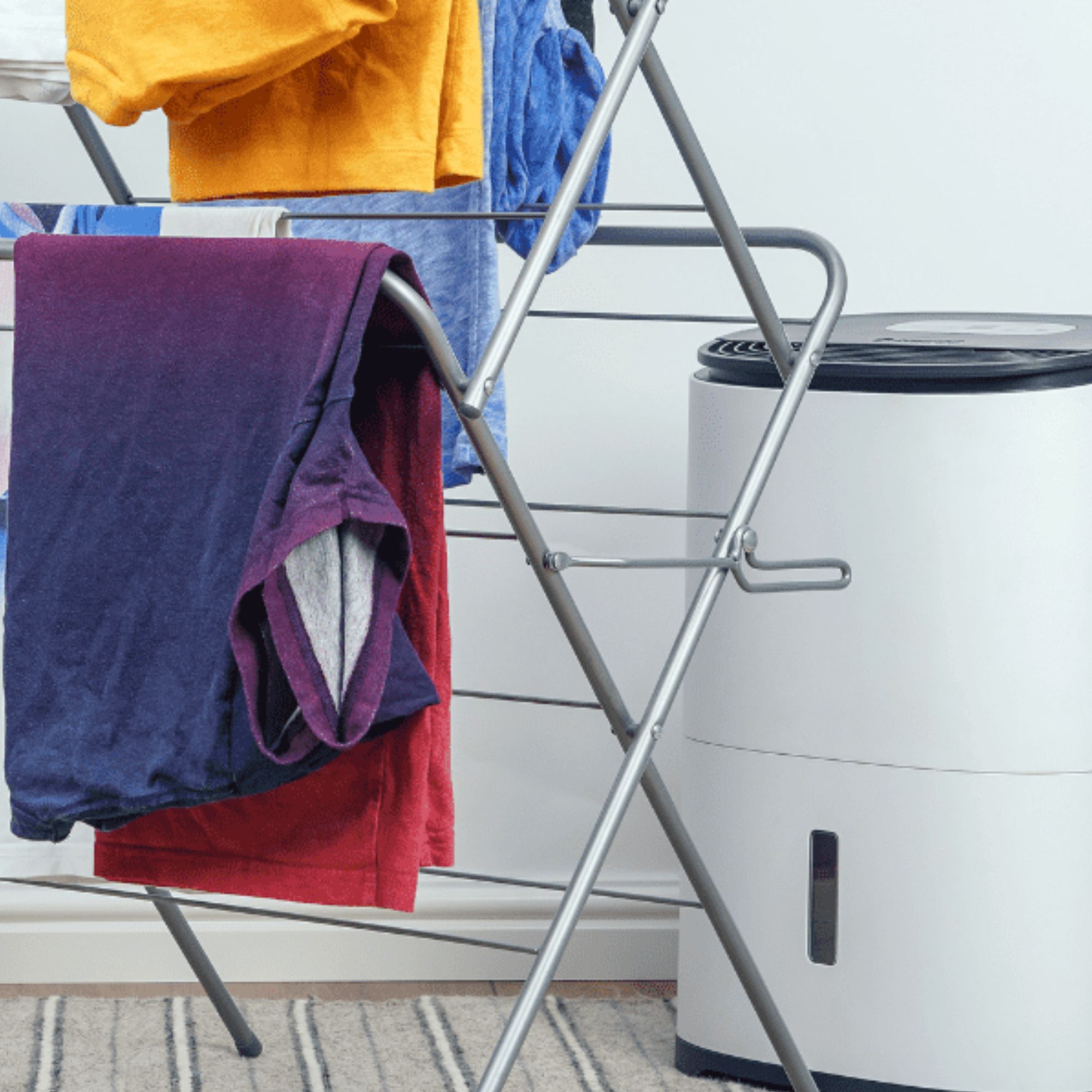
Heated airer vs dehumidifier: Which is more affordable?
To determine whether a heated airer or dehumidifier is more affordable, we need to look at two different figures: the general cost to run and the overall cost of the appliance.
In general, you can expect the cost to run a heated airer to be around 10p an hour for a 300W heated airer to dry a 15kg load of washing - which means it’ll be around £1 for eight hours of drying time. But it’s important to note that this factor is affected by the current energy price cap, the appliance's wattage, and the overall drying time. So, you’ll need to take this with a pinch of salt.
The cost to buy a heated airer also completely depends on the type, brand, and size of the appliance. The cheapest heated airer we’ve tested so far is the Status Portable Heated Clothes Airer from Robert Dyas, which retails at £59.99 when it’s not on sale for less. On the other hand, you could spend up to £249.99 on the Dry:Soon Deluxe 3-Tier Heated Clothes Airer from Amazon if you wanted to.
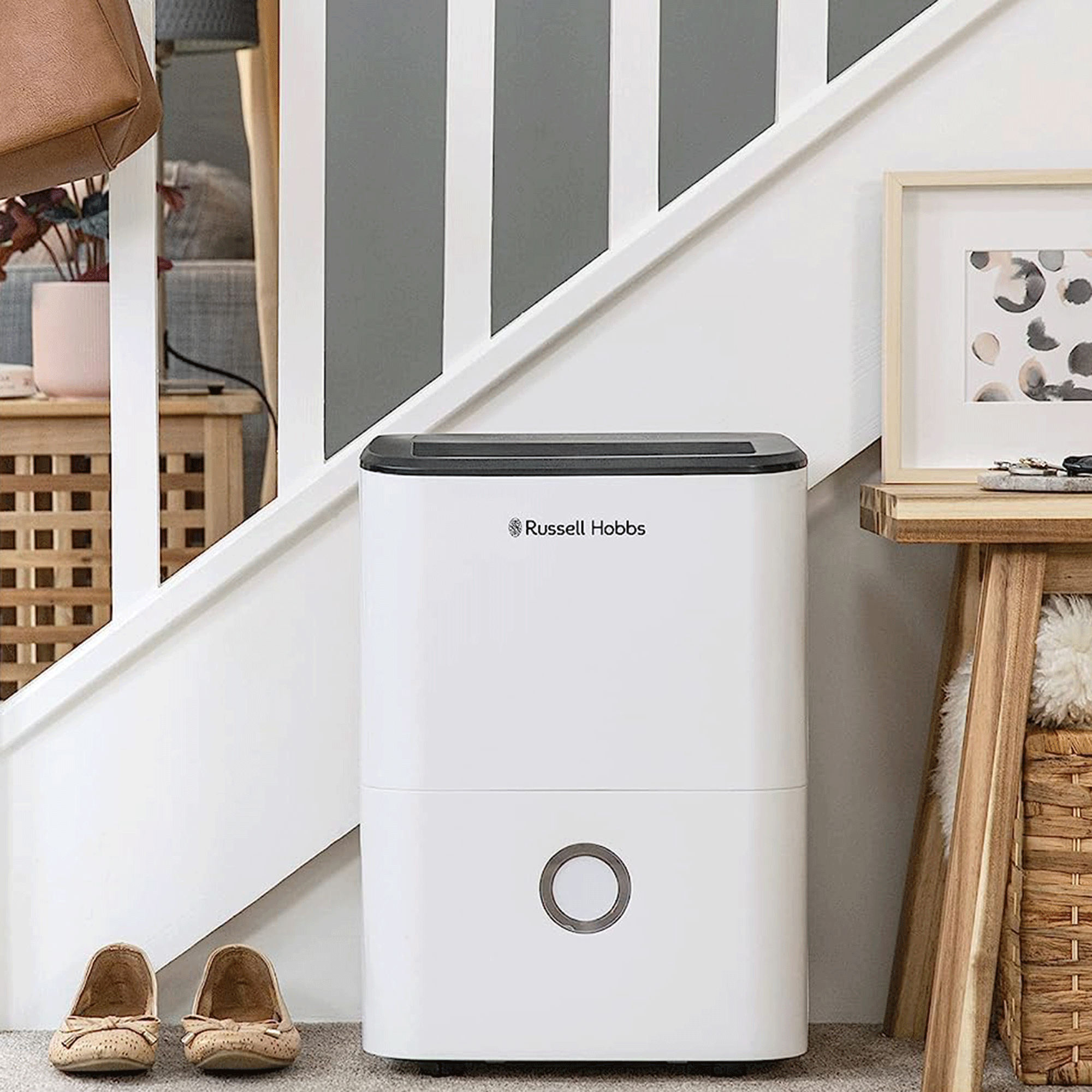
Similarly, the cost to run a dehumidifier depends on the same factors as I’ve mentioned above, from the wattage to the current energy price cap. The size of your dehumidifier will also affect how much it costs to run, as a 12L dehumidifier will undoubtedly cost less than a 20L model. For the most part, though, you should expect to pay around 12p an hour for a 480W dehumidifier and over £1 for eight hours of drying time.
The cost of buying a dehumidifier is also varied. At the expensive end of the spectrum, you have the 5-star-rated MeacoDry Arete Two 25L Dehumidifier and Air Purifier from Argos for £299, but you could opt for a more basic dehumidifier like the Pro Breeze 1500ml Mini Dehumidifier from Amazon for just £47.99. So, there’s no clear winner of this round.
Final verdict: Which one do you need?
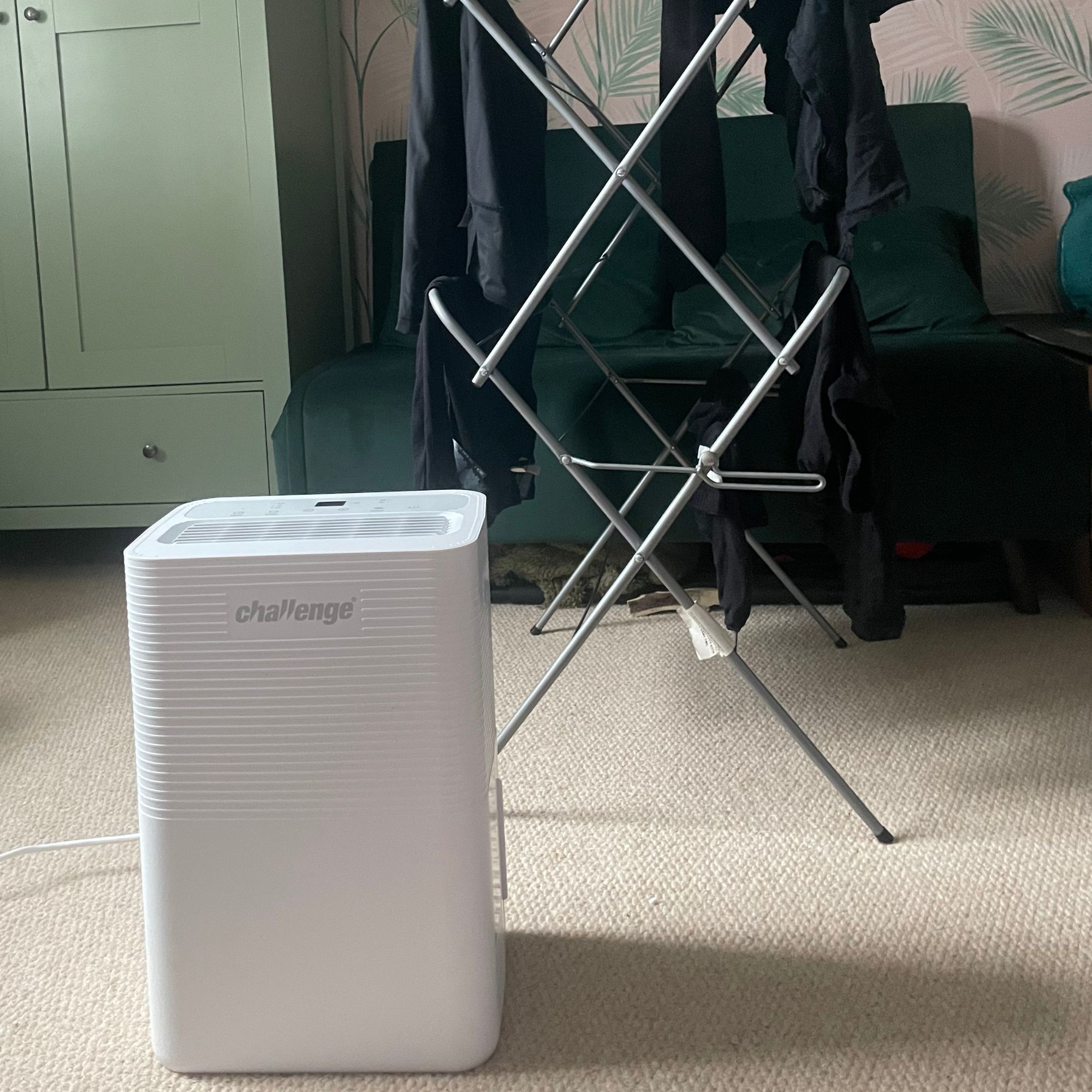
While we have been addressing this as an either/or debate, many of our team - including myself - actually prefer the heated airer AND dehumidifier approach. This way, you can get the best of both worlds and cut the drying time in half.
If you're on a budget, you could invest in a smaller dehumidifier and our most affordable heated airer for around £100 and fake a cover with a bed sheet. To keep the running cost the same, I recommend running the heated airer and dehumidifier for half the time (4 hours). You should get the benefits of both, and they will still cost less than turning to your tumble dryer.
However, when pushed, most of our team agreed that if they could only invest in one of them, a dehumidifier was the better option for drying clothes quickly and protecting your home from the damp.
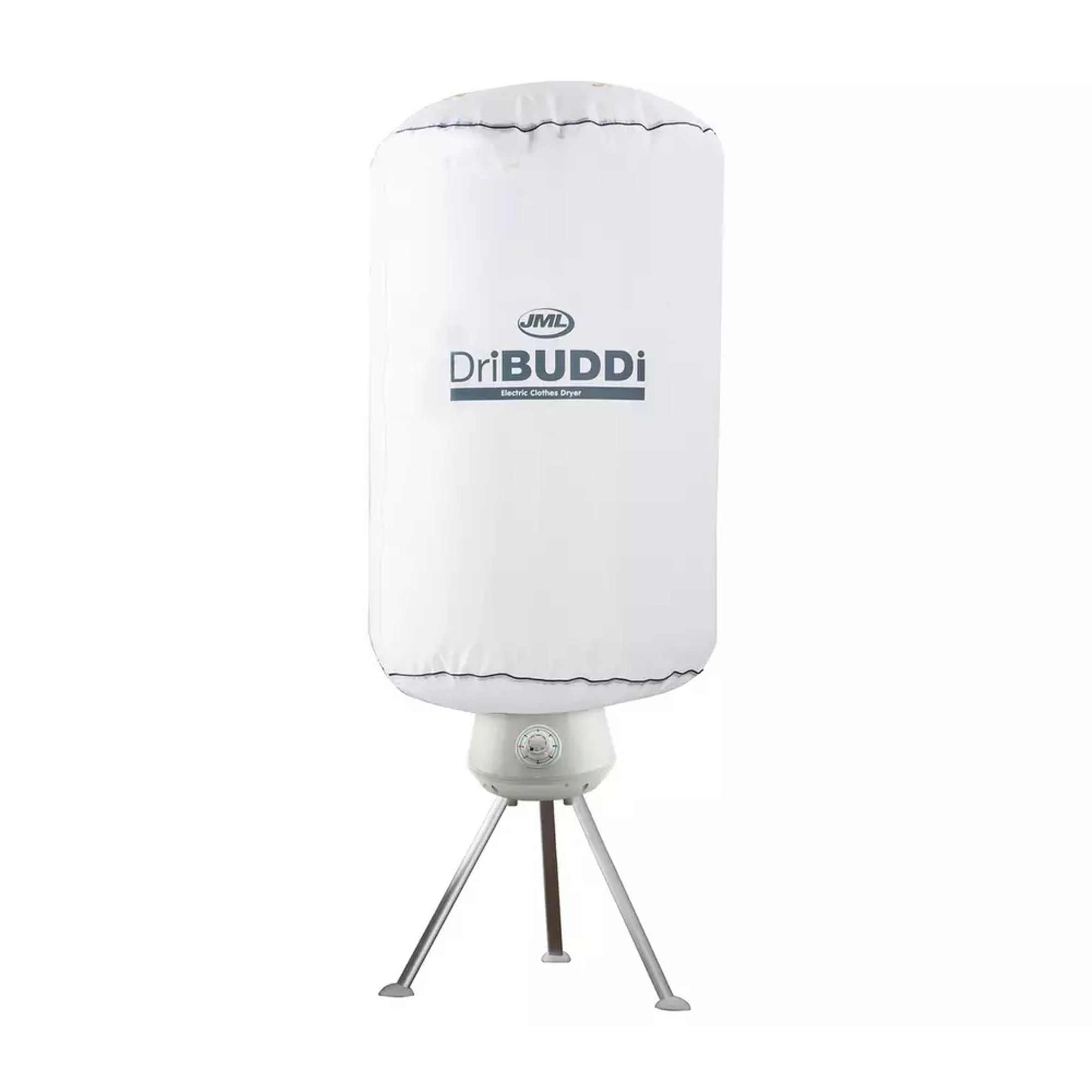
This drying pod is the crème de la crème and is currently the number one pick in our heated clothes airers guide. Thanks to targeted fan-powered heat and the pod design, it can dry your clothes in just 2-3 hours. Just be warned that it'll only fit 18 hanging items at once.

I get it if you don't want to buy a dehumidifier just to dry your clothes, which is why the MeacoDry Arete Two Dehumidifier / Air Purifier is the perfect investment. As well as drying your clothes, it'll also keep your home free from damp and condensation and serve as an air purifier, too.
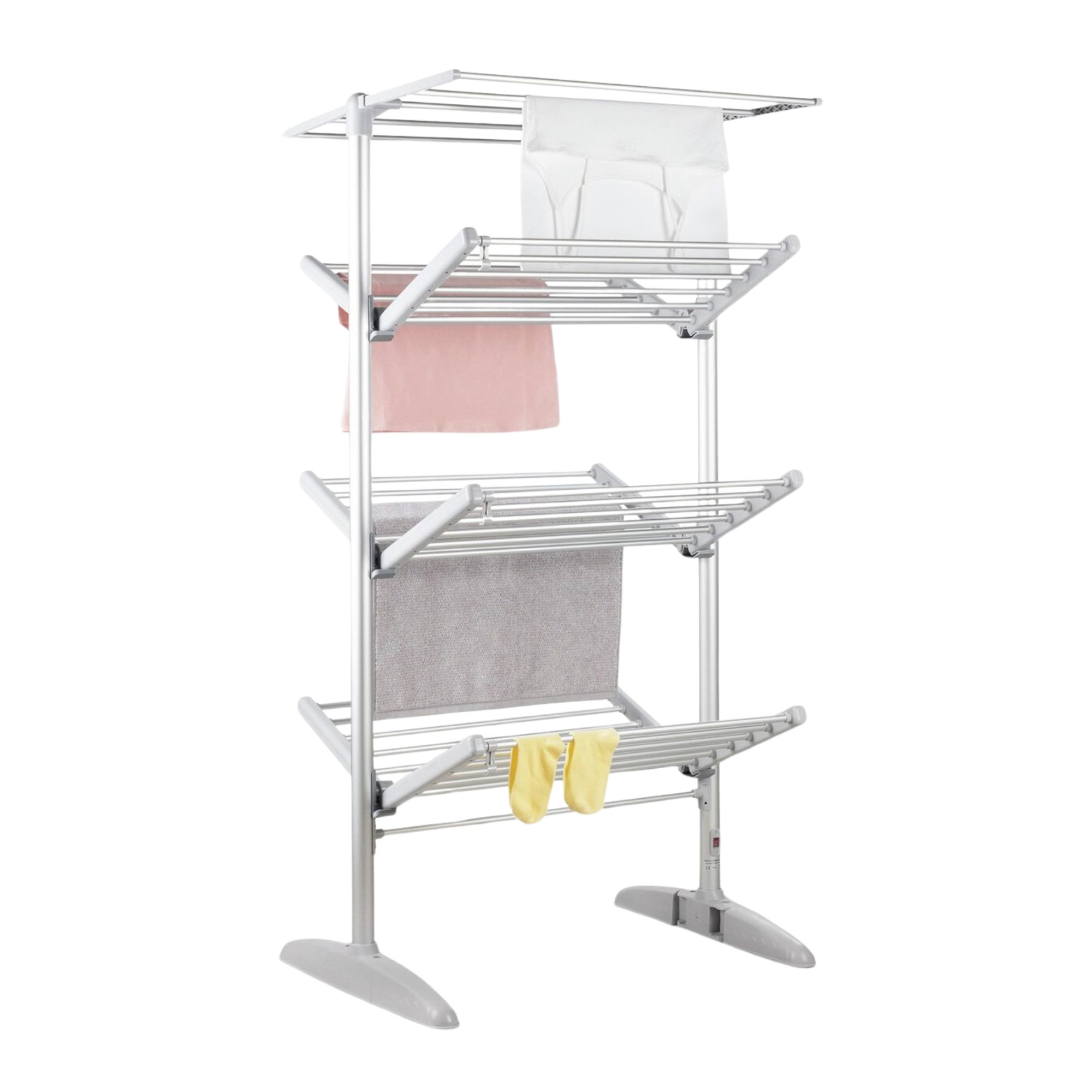
If you regularly dry larger loads of laundry, this Minky offering will suit you perfectly. With four tiers and the ability to hold up to 20kg of washing at once, it's ideal for larger families or those who are washing thicker items that need a bit more space on the rack.
FAQs
Do heated airers make your house damp?
Yes, they can do. Heated airers work by evaporating the moisture within the clothes, but that evaporated water then needs to go somewhere else if you want to keep your home free from condensation or damp.
So, you need to maintain proper air circulation while you’re using a heated airer and either open a window or use a dehumidifier to remove this excess moisture.
What is the cheapest way to dry clothes indoors?
The cheapest way to dry clothes indoors when you can’t dry them outside is to dry them in a well-ventilated room with the window open or an extraction fan running. However, if you can stretch to buy an appliance to help you, a heated airer or/and a dehumidifier will work wonders.
Although they can be used separately, using them in conjunction with each other will dry your clothes indoors in record time and won’t cost you a fortune in the process. You can also use both all year round - or until you can pop your washing outside on the line.
While dehumidifiers and heated airers will no doubt help you dry clothes in winter, it’s also worth considering the tumble dryer vs dehumidifier debate if you have a tumble dryer available to you. Your clothes will thank you for it.

Lauren Bradbury has been the Content Editor for the House Manual section since January 2025 but worked with the team as a freelancer for a year and a half before that. She graduated with a Bachelor’s degree in English and Creative Writing from the University of Chichester in 2016. Then, she dipped her toe into the world of content writing, primarily focusing on home content. After years of agency work, she decided to take the plunge and become a full-time freelancer for online publications, including Real Homes and Ideal Home, before taking on this permanent role. Now, she spends her days searching for the best decluttering and cleaning hacks and creating handy how-to guides for homeowners and renters alike, as well as testing vacuums as part of her role as the Ideal Home Certified Expert in Training on Vacuums, having spent over 110 hours testing different vacuum models to date!
- Rebecca KnightDeputy Editor, Digital
You must confirm your public display name before commenting
Please logout and then login again, you will then be prompted to enter your display name.
-
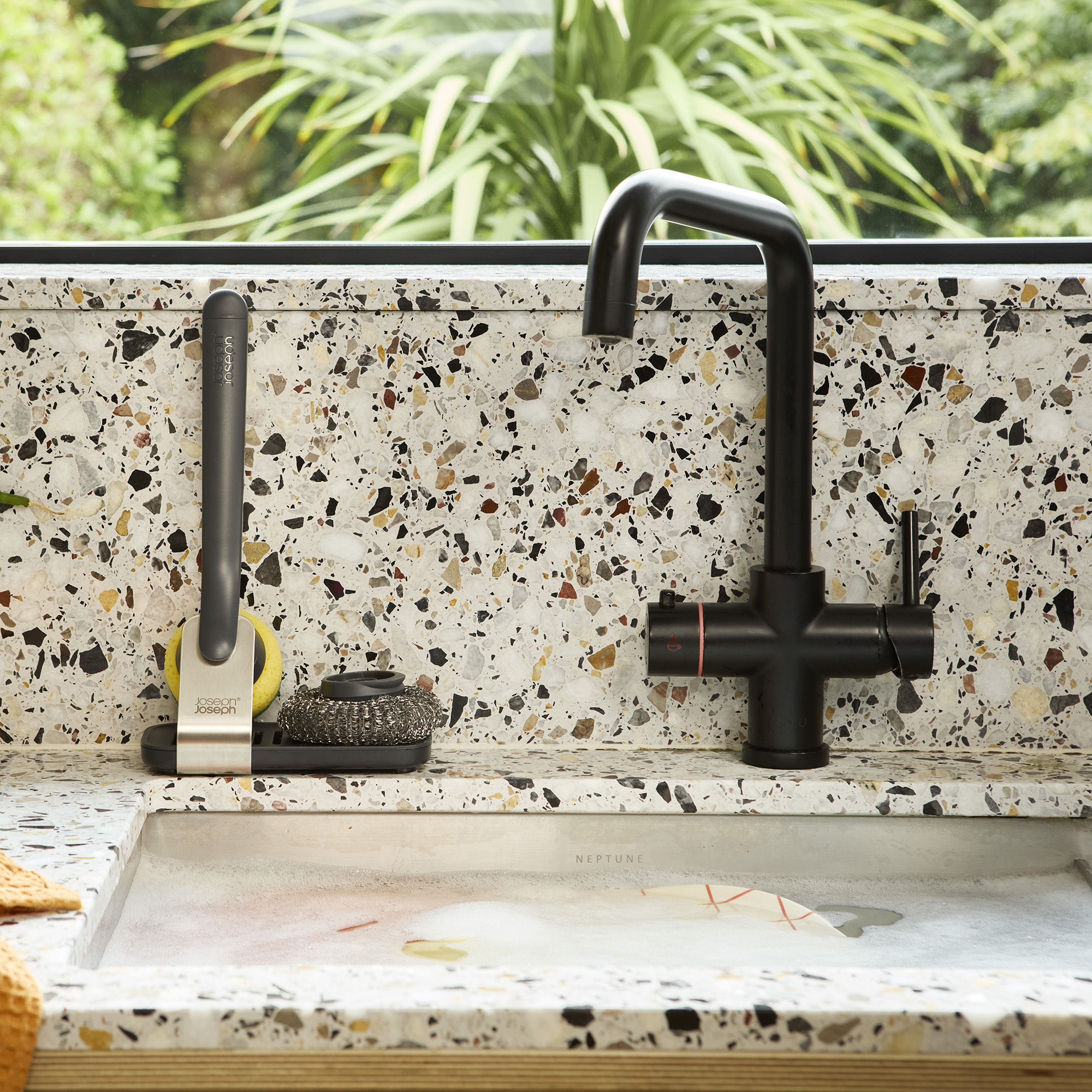 Don't tell my flatmates, but Joseph Joseph's clever new sink range finally made me enjoy washing up
Don't tell my flatmates, but Joseph Joseph's clever new sink range finally made me enjoy washing upI didn't know stylish washing up accessories existed until I saw this collection
By Holly Cockburn
-
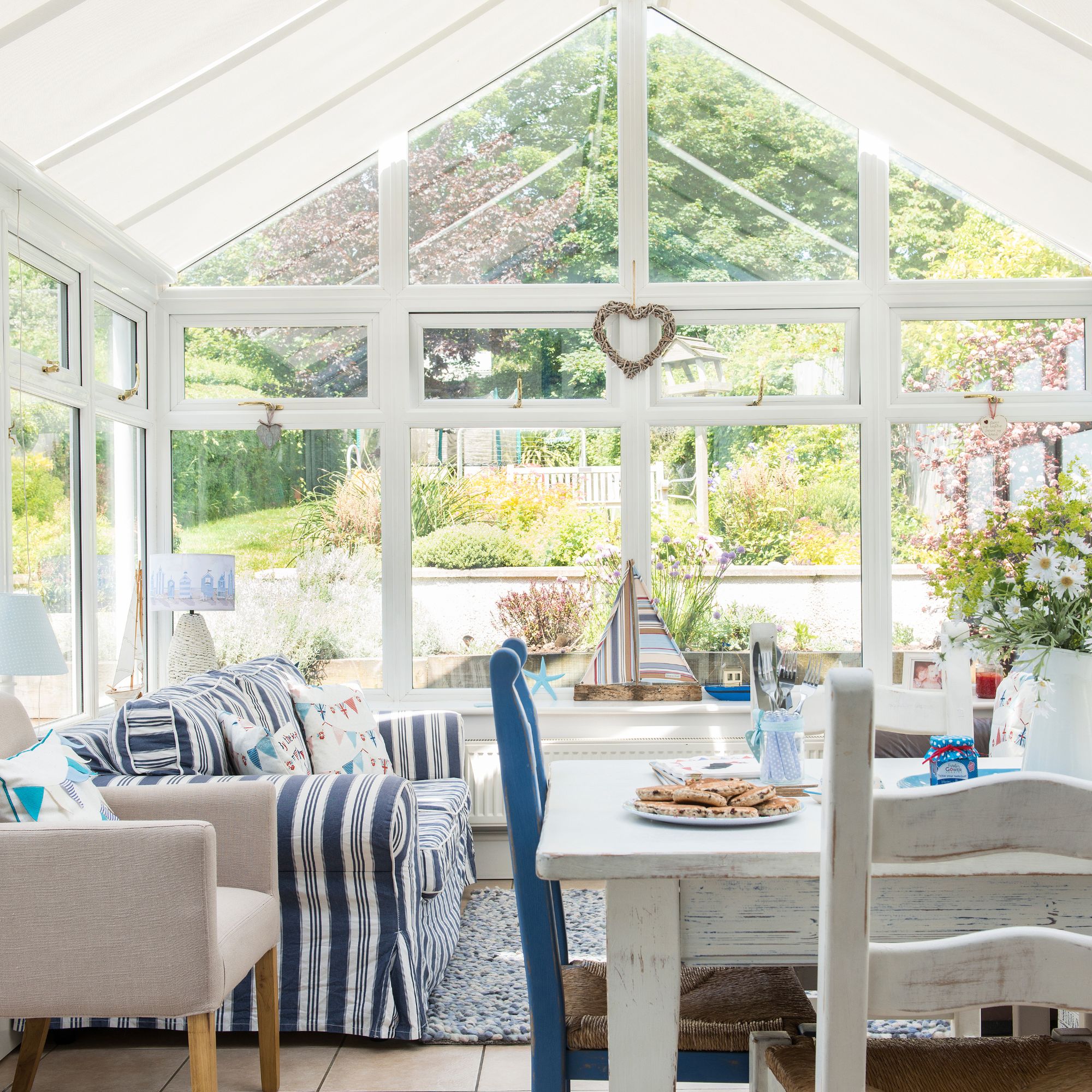 Is it cheaper to build an extension or a conservatory?
Is it cheaper to build an extension or a conservatory?One is usually cheaper, but it turns out that's not always the case
By Amy Reeves
-
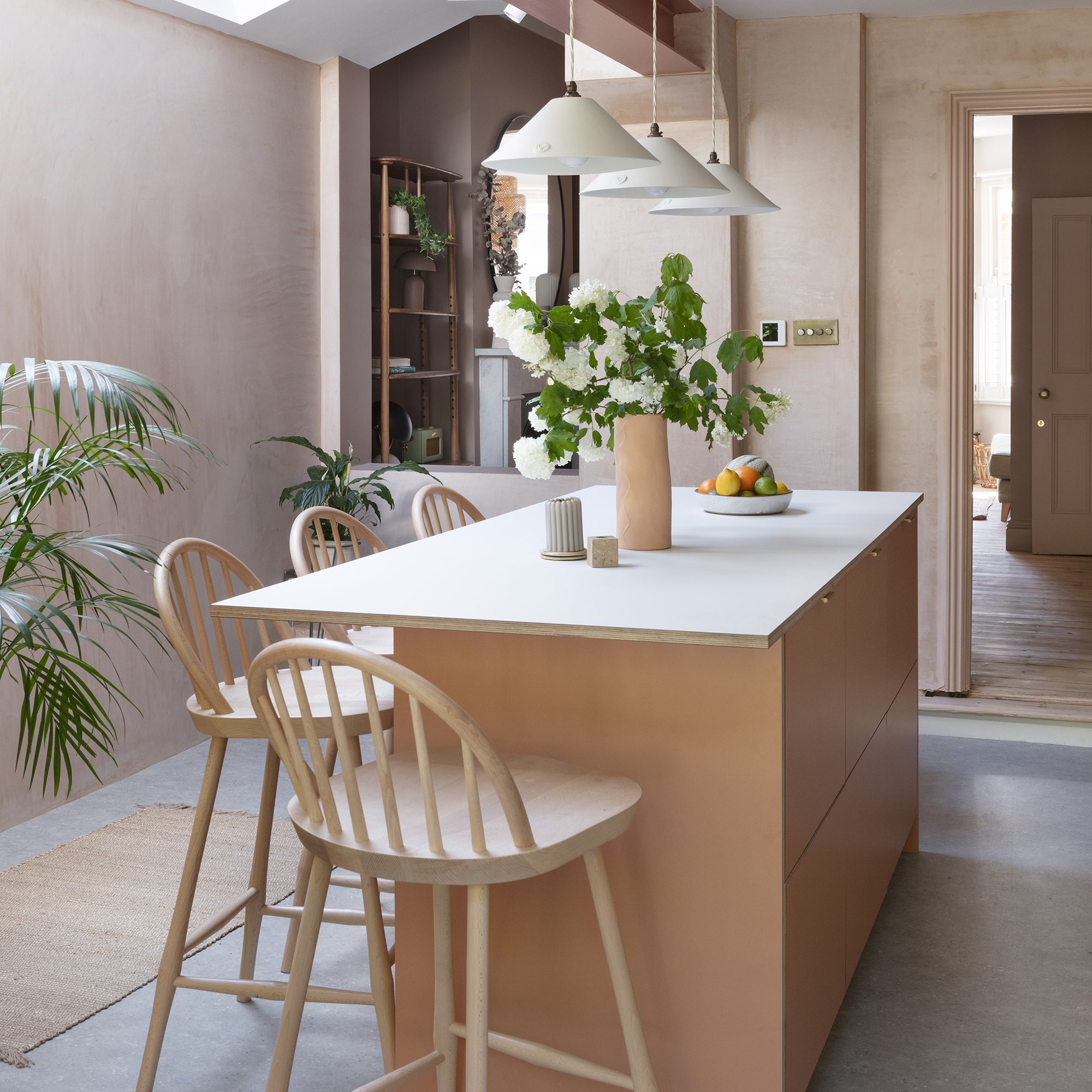 Can you add an island to an existing kitchen? Yes, but these are the 3 considerations to be aware of
Can you add an island to an existing kitchen? Yes, but these are the 3 considerations to be aware ofAdding an island is easier than you might think
By Holly Cockburn